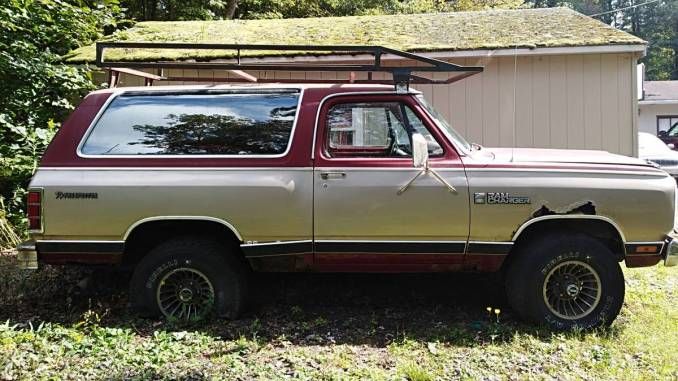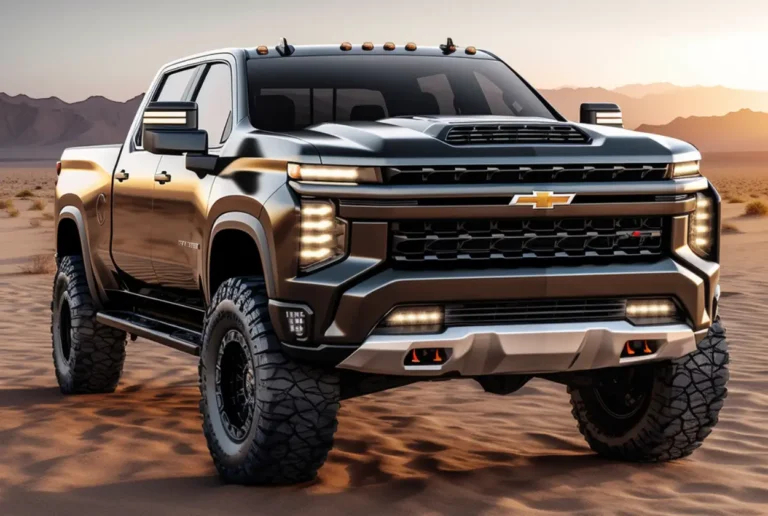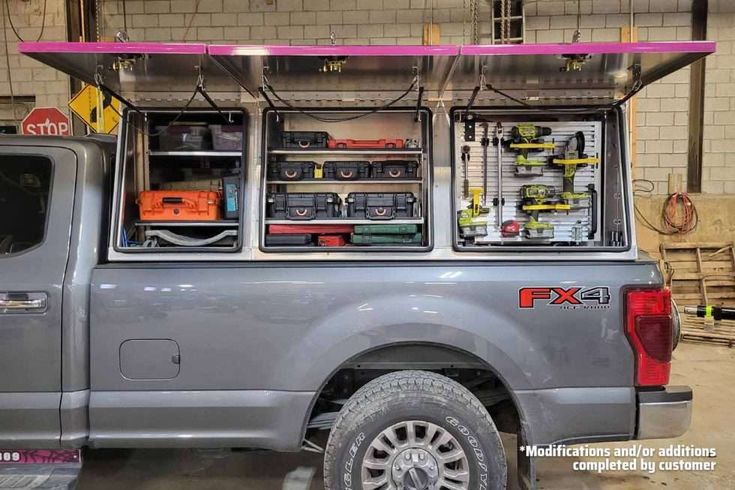1980’s Chevrolet Trucks For Sale: A Comprehensive Buyer’s Guide
1980’s Chevrolet Trucks For Sale: A Comprehensive Buyer’s Guide cars.truckstrend.com
The roar of a V8 engine, the unmistakable lines of a rugged silhouette, and a wave of nostalgia – these are just some of the reasons why 1980s Chevrolet trucks continue to capture the hearts of enthusiasts and practical buyers alike. Often referred to as "Square Body" trucks, a moniker encompassing the third-generation C/K series produced from 1973 to 1987 (with some overlap into 1991 for Suburbans and crew cabs), these vehicles represent a golden era of American automotive design. They combine utilitarian strength with a timeless aesthetic, making them highly sought after in today’s classic truck market.
Whether you’re a seasoned collector looking for a pristine show truck, a DIY enthusiast eager for a restoration project, or simply someone in need of a dependable workhorse with character, a 1980s Chevrolet truck offers a unique blend of affordability, parts availability, and undeniable cool factor. This comprehensive guide will delve into everything you need to know when considering a 1980’s Chevrolet truck for sale, from their enduring appeal to practical buying advice and market values.
1980’s Chevrolet Trucks For Sale: A Comprehensive Buyer’s Guide
The Enduring Appeal of the Square Body: Why These Trucks Matter
The 1980s Chevrolet trucks, specifically the Square Body generation, stand out for several compelling reasons:
- Iconic Design: Their boxy, no-nonsense lines are instantly recognizable and have aged gracefully. They embody a utilitarian beauty that harks back to a simpler time in automotive design, making them a favorite for customization, from lifted off-roaders to slammed street trucks.
- Built to Last: These trucks were engineered for durability. With robust frames, straightforward mechanicals, and often oversized components, they were designed to handle heavy loads and tough conditions, a testament to their longevity.
- Mechanical Simplicity: Unlike modern vehicles laden with complex electronics, 80s Chevy trucks feature relatively simple mechanical systems. This makes them easier and more affordable to maintain, repair, and even upgrade for the average DIY mechanic.
- Vast Aftermarket Support: Due to their popularity and long production run, the aftermarket parts industry for Square Body Chevrolets is immense. From original equipment (OE) replacement parts to performance upgrades and cosmetic enhancements, almost anything you need is readily available, often at reasonable prices.
- Versatility: The Square Body platform spawned a wide range of models, including short-bed and long-bed pickups (C/K10, C/K20, C/K30), the legendary K5 Blazer SUV, and the spacious Suburban. This variety means there’s a Square Body for almost any need or preference.
- Nostalgia and Investment Potential: For many, these trucks evoke a sense of nostalgia for a bygone era. Their growing popularity has also led to appreciating values, especially for well-maintained or restored examples, making them a potentially sound investment.

What to Look For: A Comprehensive Buyer’s Guide
Purchasing a vintage truck, even one as robust as an 80s Chevy, requires careful consideration. Here’s a breakdown of what to inspect:
1. Rust: The Silent Killer

Rust is the primary enemy of any older vehicle, and Square Body trucks are no exception. Pay close attention to these common rust spots:
- Cab Corners and Rocker Panels: These areas are notorious for trapping moisture and rusting from the inside out.
- Fenders and Wheel Wells: Especially around the tire openings.
- Bed Floor and Sides: Look under any bed liners, as they can trap moisture. Check the inner and outer bed sides.
- Frame: Inspect the frame rails thoroughly for any significant rust, cracks, or previous repair patches. While surface rust is common, deep, flaky, or perforated rust can compromise structural integrity.
- Floorboards and Firewall: Check under the carpets inside the cab.
- Door Bottoms: Check for rust along the bottom edges of the doors.

2. Engine and Drivetrain
The heart of any truck. Common engines include the venerable small-block Chevrolet 305 and 350 cubic inch V8s, the larger 454 big-block V8, and the less common 6.2L Detroit Diesel.
- Cold Start: Ideally, inspect the truck when the engine is cold. Listen for knocking, ticking, or excessive smoke from the exhaust (blue smoke indicates oil burning, white smoke could be coolant, black smoke rich fuel mixture).
- Fluid Leaks: Check under the truck for oil, transmission fluid, power steering fluid, or coolant leaks.
- Transmission: Test drive the truck to ensure smooth shifts in both automatic and manual transmissions. Check for slipping, harsh engagement, or unusual noises.
- Differential: Listen for humming or clunking noises from the rear end, especially during turns or acceleration.
- 4×4 System (if applicable): Engage 4-wheel drive (high and low range) and test it out. Ensure the transfer case engages smoothly and there are no unusual noises.
3. Interior Condition
While less critical for structural integrity, interior condition can significantly impact the price and your enjoyment.
- Dashboard: Cracks are common due to sun exposure. Replacement dashes are available.
- Seats: Check for tears, worn-out padding, and frame integrity.
- Headliner: Sagging or torn headliners are common.
- Door Panels: Look for cracks or damage.
- Gauges and Electronics: Test all lights, wipers, horn, radio, and power windows (if equipped). Ensure all gauges are functional.
- HVAC: Test the heater and air conditioning. A non-functional AC system can be costly to repair.
4. Suspension, Steering, and Brakes
- Suspension: Bounce each corner of the truck to check for worn shocks. Look for worn bushings, ball joints, and tie rod ends.
- Steering: Check for excessive play in the steering wheel. Listen for groaning or whining from the power steering pump.
- Brakes: Ensure the brakes are firm and stop the truck smoothly without pulling to one side or pulsating. Check for worn brake lines or leaky wheel cylinders.
5. Documentation and History
Always ask for service records, previous titles, and any documentation that sheds light on the truck’s history. A clear title is paramount.
Types and Categories: Finding Your Perfect Square Body
The 1980s Chevy truck lineup offered a model for every need:
- C-Series (2WD) & K-Series (4WD) Pickups:
- 1/2 Ton (C/K10): Most common, lighter duty, often used for daily driving or light hauling. Available in short bed (SWB) and long bed (LWB).
- 3/4 Ton (C/K20): Heavier duty, often with 8-lug wheels, designed for more substantial hauling and towing.
- 1 Ton (C/K30/K3500): Heaviest duty, often with dual rear wheels (dually) and robust frames for maximum towing capacity.
- K5 Blazer: The iconic full-size SUV, known for its removable hardtop (until 1991 for the Blazer/Yukon), making it a popular choice for off-roading and cruising.
- Suburban: The original full-size SUV, offering immense passenger and cargo capacity, making it ideal for families or those needing serious utility.
Practical Advice and Actionable Insights
- Set a Budget (and Stick to It): Factor in not just the purchase price but also potential repair costs, registration, insurance, and any planned modifications.
- Bring a Knowledgeable Friend: If you’re not mechanically inclined, bring someone who is to help you inspect the truck.
- Get a Pre-Purchase Inspection (PPI): For higher-priced or seemingly perfect trucks, a professional mechanic’s inspection is always a good idea.
- Join Online Communities: Forums and Facebook groups dedicated to Square Body trucks are invaluable resources for advice, parts sourcing, and connecting with other enthusiasts.
- Don’t Rush: There are many Square Body trucks out there. Be patient and wait for the right one that fits your budget and needs.
- Consider Your Intent: Are you building a show truck, a daily driver, or an off-road beast? Your goal will dictate the condition you should prioritize. A project truck is fine for a restoration, but a daily driver needs to be more mechanically sound.
Potential Challenges and Solutions
- Extensive Rust: While minor surface rust can be addressed, severe structural rust often requires professional welding and fabrication, which can be costly. Solution: Avoid severely rusted frames and critical body panels unless you’re prepared for significant bodywork investment.
- Worn-Out Components: Decades of use mean many wear-and-tear items (bushings, seals, bearings) will need replacement. Solution: Factor these into your budget. Most parts are affordable and readily available.
- Original Engine Issues: While durable, older engines may require rebuilds or significant repairs. Solution: Consider the cost of a rebuild or an engine swap (e.g., a modern LS swap is popular) when budgeting.
- Electrical Gremlins: Old wiring can lead to intermittent electrical issues. Solution: A good wiring diagram and patience can help diagnose issues, or consider a complete wiring harness replacement for complex builds.
Pricing Guide: 1980’s Chevrolet Trucks For Sale
The price of a 1980s Chevrolet truck varies wildly based on model, condition, engine, transmission, and originality. The following table provides estimated price ranges (in USD) for common models in different conditions. These are general guidelines, and market values can fluctuate.
| Model Variant (Examples) | Condition: Project/Parts (Needs Full Restoration) | Condition: Driver Quality (Functional, Needs Work) | Condition: Good (Solid, Minor Flaws) | Condition: Excellent (Well-Maintained, Original/Light Mods) | Condition: Show Quality (Pristine, Professional Restoration) |
|---|---|---|---|---|---|
| C10 Short Bed (2WD) | $1,500 – $4,000 | $5,000 – $10,000 | $12,000 – $25,000 | $28,000 – $45,000 | $50,000+ |
| K10 Short Bed (4WD) | $2,000 – $5,000 | $6,000 – $12,000 | $15,000 – $30,000 | $35,000 – $55,000 | $60,000+ |
| C/K10 Long Bed (2WD/4WD) | $1,000 – $3,500 | $4,000 – $9,000 | $10,000 – $20,000 | $22,000 – $38,000 | $40,000+ |
| K5 Blazer (4WD) | $2,500 – $6,000 | $7,000 – $15,000 | $18,000 – $35,000 | $40,000 – $65,000 | $70,000+ |
| Suburban (2WD/4WD) | $1,500 – $4,000 | $5,000 – $10,000 | $12,000 – $25,000 | $28,000 – $45,000 | $50,000+ |
| C/K20/30 (Heavy Duty) | $1,500 – $5,000 | $4,500 – $11,000 | $12,000 – $28,000 | $30,000 – $50,000 | $55,000+ |
Note: Prices can vary significantly based on engine option (e.g., a big block 454 often commands a premium), transmission (manuals can be rarer and sought after), factory options (AC, power windows), and geographic location.
Frequently Asked Questions (FAQ)
Q: Are 1980s Chevy trucks reliable for daily driving?
A: Absolutely, with proper maintenance. Their mechanical simplicity makes them robust. However, expect them to require more regular attention than a modern vehicle. Many enthusiasts daily drive these trucks.
Q: Are parts hard to find for these trucks?
A: No, quite the opposite! Due to their popularity and long production run, aftermarket support is excellent. Most mechanical and many body/interior parts are readily available from various suppliers.
Q: What’s the best engine option?
A: The 350 cubic inch small-block V8 is generally considered the best all-around option. It’s powerful enough for most needs, incredibly reliable, and has the most extensive aftermarket support for performance upgrades. The 454 big-block offers more torque for heavy hauling, while the 305 is adequate for light duty.
Q: Can I put modern features (like AC or power steering) into an old Chevy truck?
A: Yes! Many companies offer modern AC kits, power steering conversions, disc brake upgrades, and even complete wiring harnesses to modernize these trucks while retaining their classic appeal. LS engine swaps are also very popular for modern power and efficiency.
Q: What’s the difference between C and K series?
A: ‘C’ denotes 2-wheel drive (2WD), while ‘K’ denotes 4-wheel drive (4WD).
Q: How much rust is too much?
A: Minor surface rust on non-structural components is generally acceptable. However, any significant rust on the frame, suspension mounting points, cab supports, or areas that compromise structural integrity should be approached with extreme caution, as repairs can be very costly and complex.
Conclusion
The appeal of 1980s Chevrolet trucks for sale goes far beyond mere transportation; it’s about owning a piece of American automotive history. These Square Body workhorses offer a unique blend of rugged capability, timeless style, and a thriving community of enthusiasts. Whether you’re seeking a project to pour your passion into, a reliable classic daily driver, or a show-stopping custom build, the 80s Chevy truck market has something for everyone. With careful research, a thorough inspection, and a clear understanding of your goals, you can find the perfect Square Body to start your own adventure. Their legacy continues, proving that sometimes, the best trucks are built to last, not just for a fleeting trend.





